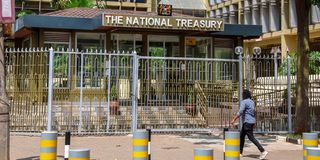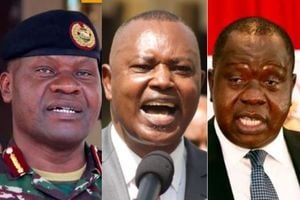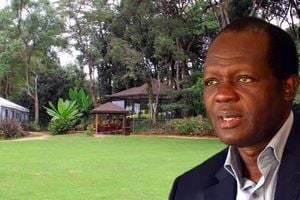Kenya to spend Sh69bn on July external debt repayments

The National Treasury building in Nairobi.
What you need to know:
- Kenya borrowed Sh659 billion in 2014 and 2015 to construct the Mombasa-Naivasha railway.
- The government is also paying Sh4.1 billion in semi-annual interest for the $1 billion Eurobond.
Kenya will spend about $533 million (Sh69 billion) servicing external debt this month, putting a fresh strain on forex reserves which have recently been replenished by the proceeds of a World Bank loan.
Public debt data compiled by the Bretton Woods shows that the biannual payments to China for the loans contracted from 2014 towards the construction of the standard gauge railway will account for 81 percent or $433 million (Sh56.1 billion) of the July external debt payments.
January and July usually account for the lion’s share of the country’s annual external debt payments due to the SGR loans.
Kenya borrowed $5.08 billion (Sh659 billion at today’s exchange rate) in 2014 and 2015 to construct the Mombasa-Naivasha railway.
The SGR loans, which were on a mix of concessional and commercial terms, are denominated in dollars and have two floating interest rates, which at the time of issuance were set at either 3.6 per cent or three per cent above the London Interbank Offered Rate (Libor) average — which has since then been discontinued.
Loan payments
The remainder of July’s debt payments are to a mix of multilateral and bilateral lenders, key among them the Eastern and Southern African Trade and Development Bank (TDB) at $22.3 million (Sh2.9 billion), France ($18.6 million or Sh2.4 billion) and the World Bank ($12.9 million or Sh1.7 billion).
The government is also paying $31.5 million (Sh4.1 billion) in semi-annual interest for the $1 billion Eurobond issued in June 2021, which carries an annual interest cost of 6.3 percent.
The loan payments are made out of the Central Bank of Kenya’s (CBK) official forex reserves, which at the end of last week stood at $7.89 billion (Sh1.02 trillion), equivalent to 4.1 months of import cover.
The reserves, which had held below the required four months cover since last year, were boosted by the proceeds of a $1.2 billion World Bank loan that was drawn down mid-last month.
External loans
The loan boosted the reserves to $8.32 billion by June 20, after which the government used $500 million to repay the remaining principal of the $2 billion 2014 Eurobond whose bulk was bought back in February.
Kenya under the administration of retired president Uhuru Kenyatta borrowed from China to build roads, power plants, railways, and bridges, seeking to spur the economy and create jobs for the youth.
At the same time in 2014, the country turned towards the Eurobond market to fund its budget deficit after rebasing its economy and becoming a lower-middle economy, which limited the access to highly concessional loans usually afforded to low-income states.
The cost of servicing these loans has gone up over the last few years on account of a weakening of the shilling against the dollar, a factor that has also raised the volume of external debt in shilling terms upon conversion.
Interest on external loans is usually paid on a semi-annual basis — with bilateral and multilateral loans also incorporating principal payments— while sovereign bonds and syndicated loans have their principal back in a bullet payment at the end of the loan’s life.





